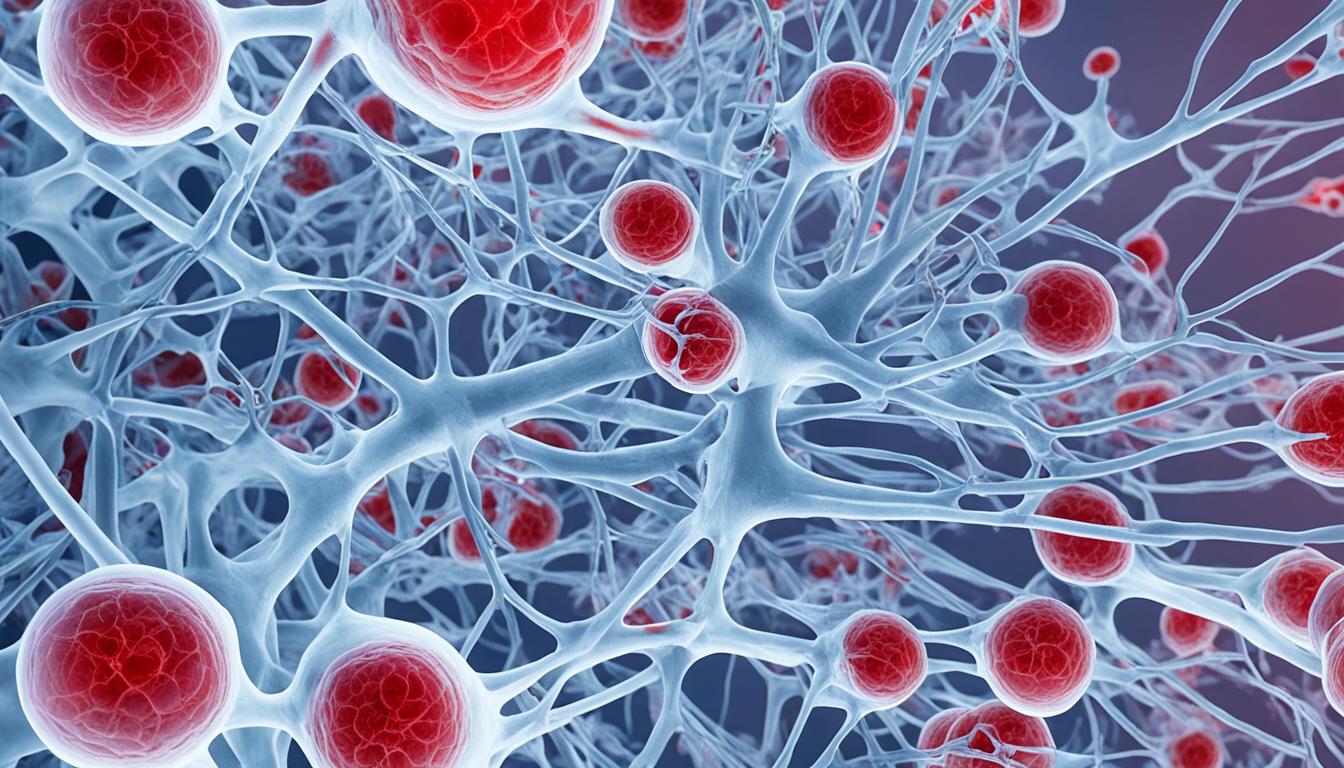Synostosis disease happens when cranial sutures fuse early. This can cause issues like skeletal deformities and craniosynostosis. The symptoms vary based on the suture that’s fused.
Patients might show an odd head shape and have trouble breathing. They could also have vision and brain problems. These issues come from the skull not growing normally.
The disorder could be due to genes, abnormal chromosomes, or harmful substances in the environment. These elements may stop sutures in the skull from growing correctly.
Doctors diagnose synostosis by looking at the head and using imaging tests. Genetic testing may also help find potential issues. This process helps with planning the right treatment.
Surgery is the main way to treat synostosis. But, it has its risks. Stem cell therapy is being looked at as a better solution. It might help avoid the need for some surgeries by helping the skull grow normally.
Key Takeaways:
- Synostosis disease is characterized by the premature fusion of cranial sutures.
- Symptoms of synostosis include abnormal head shape, difficulty breathing, vision problems, and neurological impairments.
- Causes of synostosis can be genetic mutations, chromosomal abnormalities, or adverse environmental effects.
- Diagnosis involves physical examination, medical imaging, and genetic testing.
- Stem cell therapy shows promise as a potential alternative treatment for synostosis.
Symptoms of Synostosis Disease
Synostosis disease causes early fusion of skull sutures. This leads to several symptoms. One main symptom is an odd head shape.
The head can look flat or pointy because the sutures can’t grow the skull properly.
Breathing problems can also happen. The fused sutures affect how the skull grows. This can make it hard to breathe.
Problems with vision are common too. The fused skull bones press on the eye sockets. This can cause eyesight issues.
Patients might also face issues with their brain and nerves. This can lead to slow development, trouble learning and understanding things, and unusual senses.
Summary:
Synostosis shows through head shape, breathing issues, sight troubles, and brain problems. Spotting these signs early is key for treating the disease.
Causes and Diagnosis of Synostosis Disease
Synostosis disease can start from several factors like genetic changes, problems with chromosomes, and things in the environment. These factors can stop the growth of cranial sutures, making them join too soon.
Genetic changes are important in some synostosis cases. These changes affect the genes responsible for suture growth. This leads to early sutures fusion, a key sign of synostosis.
Problems with chromosomes also play a part in synostosis. They mess up the genetic instructions needed for proper suture growth. This can also cause sutures to join too soon.
Some outside influences can up the synostosis risk. Things like drugs or toxins during pregnancy might have a link. Knowing about these environmental risks can help prevent or spot synostosis early.
To diagnose synostosis, doctors take a thorough look at the patient. They check the shape of the head and signs like abnormal faces or brain issues. A physical exam is the first step.
Doctors also use imaging tests like X-rays or CT scans. These show the fused sutures clearly. They help determine how bad the situation is, guiding treatment plans.
Genetic tests are crucial in synostosis diagnosis and treatment. They help find any hidden genetic issues or problems with chromosomes. This knowledge is key in deciding the best treatments and offering a proper understanding of the disease’s roots.
Overall, diagnosing and understanding synostosis needs a mix of approaches. Doctors look at genetic, environmental, and suture growth issues. By doing thorough exams, imaging tests, and genetic checks, they can spot and plan the treatment of synostosis.
Stem Cell Therapy Advancements for Synostosis Disease
Surgical correction is the main treatment for synostosis, but a new method is emerging. Stem cell therapy shows promise without as many complications. It focuses on using mesenchymal stem cells to regrow bone and tissue.
Tests in animals have shown hopeful signs. If confirmed, this therapy could be less risky and better for treating craniosynostosis. It might avoid the need for more surgeries after the first one.
Adding stem cell therapy to synostosis care may mean needing less surgery. This could help patients by lowering risks and improving results. The progress in stem cell work gives hope for different, better ways to treat synostosis.

